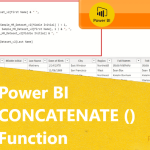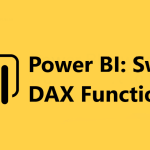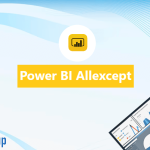Azure Security Center is a Microsoft cloud security service that helps organizations monitor, manage, and protect their Azure resources. It offers threat detection, vulnerability management, and security recommendations in a centralized platform, enabling businesses to maintain a strong security posture.
Its advanced features include AI-driven threat analytics, compliance management, and integration with third-party security tools. As a result, Azure Security Center provides organizations with a flexible, scalable, cost-effective solution to secure their cloud infrastructure and mitigate potential cyber threats.
In this article, we’ll look at the key features and pricing options of Azure Security Center, enabling you to make informed decisions about safeguarding your valuable cloud assets.
How does Azure Security Center work?
Azure Security Center operates as a comprehensive cloud security service, aiming to help organizations protect their Azure resources and maintain a strong security posture. Its functionality is built upon three core principles: data collection and monitoring, threat detection and response, and compliance and policy management:

In the first phase, Azure Security Center collects telemetry data from various sources, including Azure resources, virtual machines, networks, and partner solutions. Then, using AI-driven analytics and leveraging Microsoft’s global threat intelligence, it continuously monitors this data to identify potential threats and vulnerabilities in real time.
The second phase focuses on threat detection and response. Azure Security Center employs advanced analytics and machine learning algorithms to identify security issues. It generates security alerts, prioritizing them based on severity, and offers actionable insights and recommendations to remediate identified vulnerabilities. And it enables automated responses to specific threats through integration with Azure Logic Apps.
In the end, Azure Security Center emphasizes compliance and policy management. It provides a centralized platform for managing security policies and monitoring compliance with industry-specific regulations and standards. Offering a clear overview of an organization’s compliance status and recommending remediation steps helps businesses adhere to required security benchmarks and minimize the risk of breaches or penalties.
What are Azure Security Center Features?
Azure Security Center is designed to help organizations protect their workloads running in the Azure cloud and on-premises. Here are some key features of Azure Security Center:
Continuous security assessment
Security Center automatically assesses the security state of your Azure resources, providing recommendations to improve the security configuration and settings of various Azure resources, such as virtual machines, storage accounts, databases, and networks, to identify potential vulnerabilities and threats.
Secure score
It calculates a secure score based on the security posture of your resources, helping you prioritize security tasks and measure the progress of your security improvements. Analyzing the configuration, settings, and security measures in place provides a comprehensive and easily understood score that enables IT administrators and security teams to identify areas of concern, prioritize remediation efforts, and track the effectiveness of security enhancements over time.
Threat detection
Security Center uses advanced analytics and machine learning to detect threats, such as unusual or malicious activities, in your Azure environment. It also integrates with Azure Sentinel for comprehensive security analytics. The system is designed to detect and prevent attacks by continuously monitoring your network and infrastructure for signs of malicious activity.
Security alerts
It generates alerts when potential security threats or vulnerabilities are detected, providing detailed information about the threat, its potential impact, and recommended remediation steps. These alerts are generated whenever the system detects potential security threats or vulnerabilities in your Azure environment. The alerts are designed to provide you with comprehensive and actionable information about the detected threat, including its potential impact, the affected assets, and the severity of the threat.
Vulnerability assessment
Security Center integrates with Azure Defender, which offers vulnerability assessment and management features for various resources, such as virtual machines, containers, and storage accounts. This integration allows you to quickly identify and remediate vulnerabilities in your resources, reducing the risk of potential security threats and breaches.
Compliance management
It helps you monitor and manage compliance with regulatory standards and best practices, such as GDPR, HIPAA, and NIST. In addition, the security Center provides compliance dashboards to track your compliance posture and offers recommendations for improvement. This is achieved through detailed compliance dashboards, which provide a clear and concise overview of your current compliance posture and highlight any areas of concern.
Security policies
You can create and customize security policies that define the desired security configurations for your Azure resources. The Security Center continuously monitors your resources for policy compliance. This includes specifying the required security configurations for virtual machines, containers, storage accounts, and other resources.
Implementing Azure Security Center Best Practices for Optimal Cloud Security
As organizations continue to adopt cloud computing, ensuring the security of their cloud environment has become increasingly important. Follow these guidelines to enhance the protection of your resources:
Enable Azure Security Center
Ensure that the Standard tier of Azure Security Center is enabled. This provides advanced threat protection and security recommendations across your Azure resources. In addition, the Azure Security Center dashboard can do particular settings that overview your security posture and alert you to potential threats or vulnerabilities.
To make sure you understand the latest security threats and vulnerabilities, it is recommended to subscribe to security advisories and bulletins from Microsoft and other trusted sources.
Continuous monitoring
Enable continuous monitoring to assess the security posture of your resources, detect threats, and provide security recommendations. By enabling continuous monitoring, you can stay informed of any changes in your security posture and quickly detect and respond to potential threats.
In the Azure Security Center, continuous monitoring involves using security policies defining the security standards your resources should comply with.
Configure security policies
Create and configure security policies to govern your resources. Then, tailor the policies to your organization’s security requirements and compliance standards. By defining clear security policies, you can set clear expectations for your resources and ensure that they comply with your organization’s security requirements and compliance standards.
Enable Azure Defender
Enable enhanced threat protection across various resource types, such as virtual machines, storage accounts, containers, and databases. In addition, you can improve your security posture by detecting and preventing threats in real-time by enabling Azure Defender.
With Azure Defender, you can protect various resource types, including virtual machines, storage accounts, containers, and databases.
Implement Just-In-Time VM Access
JIT VM access minimizes the exposure of your virtual machines by reducing the attack surface. Enable JIT VM access to restrict inbound traffic to your VMs and provide controlled access when needed.
When JIT VM access is enabled, incoming traffic to your virtual machines is blocked by default. Access is only granted when explicitly approved through the Azure Security Center and is automatically revoked after a specified period.
Enable adaptive application controls
Adaptive application controls help protect your applications by allowing only approved applications to run. This reduces the risk of running malicious or unapproved software.
Adaptive application controls use policies to define which applications are approved for execution on your systems. The Azure Security Center enforces the policies, continuously monitoring your systems to ensure that only approved applications are running.
Encrypt data at rest
Use Azure Disk Encryption (ADE) for virtual machines and Azure Storage Service Encryption (SSE) for storage accounts to encrypt data at rest. Encrypting data at rest is a critical component of a comprehensive security strategy. By encrypting data at rest, you can ensure that sensitive information is protected even if an attacker gains access to your storage systems.
In Azure, you can use Azure Disk Encryption (ADE) for virtual machines and Azure Storage Service Encryption (SSE) for storage accounts to encrypt data at rest.
Encrypt data in transit
Enable secure communication using HTTPS and configure Azure Private Link to access your services over a private connection securely. Encrypting data in transit is another crucial step in protecting sensitive information. By encrypting data in transit, you can ensure that sensitive information is protected as it travels over the network.
In Azure, you can enable secure communication using HTTPS to encrypt data in transit. HTTPS encrypts data between the client and the server, ensuring that sensitive information is protected as it travels over the network.
Secure identity and access management
It is a critical component of a comprehensive security strategy. By implementing Azure Active Directory (Microsoft Entra ID) for identity management and using multi-factor authentication (MFA), you can ensure that your systems are protected and that only authorized users can access sensitive information.
Monitor and review security alerts
Regularly review security alerts and recommendations in the Azure Security Center. Investigate and remediate threats and vulnerabilities as they arise. Set up email notifications for high-priority alerts to ensure prompt action.
Setting up email notifications for high-priority alerts is recommended to ensure you are promptly notified of critical security issues. This will allow you to take prompt action to remediate the issue and minimize the risk of data loss or compromise.
Azure Security Center Pricing
With its Free tier and expanded security features, Microsoft Defender for Cloud helps you safeguard resources across Azure, other clouds, and on-premises. The Microsoft Defender for Cloud Free Tier features a Secure Score for Azure and AWS environments, continuous evaluation, and security advice.
For the first 30 days, Microsoft Defender for Cloud is free. Any usage that lasts longer than 30 days will be directly charged according to the Azure Security Center pricing structure listed below.
| Resource Type | Price |
| Microsoft Defender for Servers | $0.02/Server/hour Included data – 500 MB/day |
| Microsoft Defender for App Service | $0.02/App Service/hour |
| Microsoft Defender for SQL on Azure | $0.021/Instance/hour2 |
| Microsoft Defender for SQL outside Azure | $0.015/vCore/hour3 |
| Microsoft Defender for MySQL | $15/Instance/month |
| Microsoft Defender for PostgreSQL | $15/Instance/month |
| Microsoft Defender for MariaDB | $0.021/Instance/hour |
| Microsoft Defender for Storage1 | $0.02/10K transactions |
| Microsoft Defender for Kubernetes | $0.00268/vCore/hour |
| Microsoft Defender for ACR | $0.29/image |
| Microsoft Defender for Containers | $7/vCore/month 4 5 |
| Microsoft Defender for Key Vault | $0.02/10K transactions |
| Microsoft Defender for ARM | $4/1M API calls |
| Microsoft Defender for DNS | $0.70/1M Queries |
Microsoft Defender for IoT (formerly Azure Defender for IoT)
Defender for IoT delivers unified security for IoT/OT environments, offering two different sets of capabilities depending on whether you need to protect existing IoT/OT environments or are securing new IoT/OT devices that are provisioned and managed through Azure IoT Hub.
Agentless monitoring
Defender for IoT’s agentless monitoring features current secure business IoT/OT environments by automatically discovering assets, managing vulnerabilities, and detecting advanced threats.For the first 1,000 committed devices, Defender for IoT’s agentless monitoring features is free for the first 30 days. After that, customers will be billed according to the rates shown below. Incorporating Defender for IoT alerts and incidents into Microsoft Sentinel is free.
Security for new devices provisioned through IoT Hub
For the first 30 days, these security features are entirely free. Any usage that lasts longer than 30 days will be subsequently charged at the rates listed below.
| Solution | Price |
| Defender for IoT for devices managed by IoT Hub – by device | $0.001/month |
| Defender for IoT for devices managed by IoT Hub – by messages | $0.20/25K transactions |
How can EPC Group help you with Azure Sentinel Consulting?
EPC Group is a Microsoft consulting firm specializing in various services, including Azure Sentinel consulting.
Azure Sentinel, a cloud-native Security Orchestration, Automation, and Response (SOAR) and Security Information and Event Management (SIEM) from Microsoft, provides advanced security analytics and threat intelligence to help organizations detect, investigate, and respond to cyber threats.
By working with EPC Group, your organization can leverage its expertise to assess your security needs, develop a tailored strategy, and implement Azure Sentinel effectively.
Frequently Asked Questions
1. Where is the security center in Azure?
To access it, log in to the Azure Portal (https://portal.azure.com) and navigate to the left-hand menu. Next, click “Security Center” or search for it at the top of the page in the search box. This will take you to the Azure Security Center dashboard, where you can monitor and manage your cloud security posture, configure policies, and address security recommendations.
2. What is Azure Security Center called now?
As of September 2021, Azure Security Center has been rebranded as “Azure Defender.” This change is part of Microsoft’s consolidating and enhancing its security offerings. Azure Defender is a necessary component of the integrated Azure Security service, providing advanced threat protection and security management across your hybrid cloud environment. To access Azure Defender, log in to the Azure Portal and navigate to the Azure Security dashboard.
3. Is Azure Security Centre a SIEM?
Azure Security Center is not a SIEM (Security Information and Event Management) solution but offers some SIEM-like functionalities. It provides threat protection and security management for Azure resources, on-premises resources, and multi-cloud environments. While it can help detect and respond to security incidents, it should not be considered a full-fledged SIEM.
4. How do Azure Security Center and Azure Sentinel differ from each other?
Azure Security Center and Azure Sentinel are security solutions offered by Microsoft Azure, but they serve different purposes. Azure Security Center is a unified infrastructure security management system that provides security recommendations and protection for Azure resources. In addition, it helps secure workloads and prevent, detect, and respond to threats.
On the other hand, Azure Sentinel is a cloud-native security information and event management (SIEM) solution that provides a single platform for security teams to detect, investigate, and respond to threats across their entire environment, including Azure, other cloud platforms, and on-premises systems.










